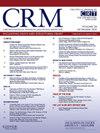Anxiety during transcatheter aortic valve replacement under local anesthesia - the ART-VR trial
IF 1.9
Q3 CARDIAC & CARDIOVASCULAR SYSTEMS
引用次数: 0
Abstract
Background
The use of local anesthesia during transcatheter aortic valve replacement (TAVR) could result in patient discomfort. Application of immersive virtual reality (VR) during TAVR might distract the patient and enhance the overall experience.
Objective
To evaluate the effect of an immersive VR environment on periprocedural anxiety and patient discomfort, compared to standard of care in patients undergoing transfemoral (TF) TAVR under local anesthesia.
Methods
In this single-center, randomized controlled pilot study, patients were randomized to either VR immersion during TAVR or standard of care. The intervention was a VR headset to create 3D experiences during percutaneous transfemoral TAVR. The main outcome was patient-reported procedural anxiety assessed directly after the procedure on a visual analog scale (VAS). Secondary outcomes were procedural satisfaction, pain, and change in anxiety. Personality scores were obtained at baseline to explore associations between personality types and relevant outcomes.
Results
A total of 75 patients (VR = 37, control = 38) were included between September 2021 and January 2023. The median age was 79 (25th–75th: 75–84) years and 32 patients (43 %) were female. Overall procedural anxiety VAS was 1.0 (0.0–3.0) and satisfaction was 9.0 (8.0–10.0). There was no difference in procedural anxiety between VR and control (VAS: 1.0 [25th–75th: 0.0–3.0] versus 1.0 [25th–75th: 0.0–3.0], p = 0.59). Procedural satisfaction, pain perception and change in anxiety were not affected by VR use.
Conclusion
Patients undergoing TF-TAVR under local anesthesia experienced mild procedural anxiety and high satisfaction levels. Procedural VR use did not affect procedural anxiety or pain perception.
局部麻醉下经导管主动脉瓣置换术中的焦虑- ART-VR试验。
背景:在经导管主动脉瓣置换术(TAVR)中使用局部麻醉可能会导致患者不适。在TAVR中应用沉浸式虚拟现实(VR)可以分散患者的注意力,增强整体体验。目的:评估沉浸式VR环境对局麻下经股TAVR患者围术期焦虑和患者不适的影响,并与标准护理进行比较。方法:在这项单中心、随机对照的初步研究中,患者在TAVR期间被随机分为VR沉浸组和标准护理组。在经皮经股TAVR过程中,使用VR头戴设备来创造3D体验。主要结果是患者报告的手术焦虑,在手术后直接用视觉模拟量表(VAS)评估。次要结局是手术满意度、疼痛和焦虑的改变。在基线上获得人格分数,以探索人格类型与相关结果之间的联系。结果:在2021年9月至2023年1月期间,共纳入75例患者(VR = 37, control = 38)。中位年龄79岁(25 -75:75-84),女性32例(43%)。程序性焦虑VAS评分为1.0(0.0 ~ 3.0),满意度评分为9.0(8.0 ~ 10.0)。试验组与对照组的程序性焦虑无差异(VAS: 1.0 [25 -75: 0.0-3.0] vs . 1.0 [25 -75: 0.0-3.0], p = 0.59)。手术满意度、疼痛感和焦虑变化不受VR使用的影响。结论:局麻下TF-TAVR患者手术焦虑轻微,满意度高。程序性虚拟现实使用不影响程序性焦虑或疼痛感知。
本文章由计算机程序翻译,如有差异,请以英文原文为准。
求助全文
约1分钟内获得全文
求助全文
来源期刊

Cardiovascular Revascularization Medicine
CARDIAC & CARDIOVASCULAR SYSTEMS-
CiteScore
3.30
自引率
5.90%
发文量
687
审稿时长
36 days
期刊介绍:
Cardiovascular Revascularization Medicine (CRM) is an international and multidisciplinary journal that publishes original laboratory and clinical investigations related to revascularization therapies in cardiovascular medicine. Cardiovascular Revascularization Medicine publishes articles related to preclinical work and molecular interventions, including angiogenesis, cell therapy, pharmacological interventions, restenosis management, and prevention, including experiments conducted in human subjects, in laboratory animals, and in vitro. Specific areas of interest include percutaneous angioplasty in coronary and peripheral arteries, intervention in structural heart disease, cardiovascular surgery, etc.
 求助内容:
求助内容: 应助结果提醒方式:
应助结果提醒方式:


